- Joined
- Oct 9, 2007
- Messages
- 47,895 (7.37/day)
- Location
- Dublin, Ireland
| System Name | RBMK-1000 |
|---|---|
| Processor | AMD Ryzen 7 5700G |
| Motherboard | Gigabyte B550 AORUS Elite V2 |
| Cooling | DeepCool Gammax L240 V2 |
| Memory | 2x 16GB DDR4-3200 |
| Video Card(s) | Galax RTX 4070 Ti EX |
| Storage | Samsung 990 1TB |
| Display(s) | BenQ 1440p 60 Hz 27-inch |
| Case | Corsair Carbide 100R |
| Audio Device(s) | ASUS SupremeFX S1220A |
| Power Supply | Cooler Master MWE Gold 650W |
| Mouse | ASUS ROG Strix Impact |
| Keyboard | Gamdias Hermes E2 |
| Software | Windows 11 Pro |
In Win today rolled out the SR24, an all-in-one liquid CPU cooler featuring a patented "twin turbine pump" feature. These are basically two pump turbines attached on both ends of the DC motor's shaft, which in turn are located on either ends of the CPU block. One of the turbine pushes coolant into the block, while the other pulls heated coolant from it. In Win claims that even if one of the two fails over time, the other will provide sufficient coolant pressure to cool your CPU, while a warning LED lights up. With both turbines operational, the SR24 offers double the coolant pressure, and a markedly superior P-Q curve. The pump block is capped off with an RGB illuminated In Win logo.
The innovative pump-block of the In Win SR24 is tubed to a 240 mm x 120 mm aluminium radiator. Ventilating it are a pair of included In Win Jupiter 120 mm fans that each spin at speeds of 500 to 2,500 RPM, with up to 101.5 CFM of air-flow, and as low as 23 dBA of noise output. The fans feature double ball bearings and feature addressable RGB LEDs in their hubs. A single 3-pin ARGB connection handles lighting for the two fans and the pump-block. The company didn't mention thermal load numbers, but among the CPU socket types supported are TR4, sTRX4, LGA2066, AM4, and LGA115x. The company didn't reveal pricing.
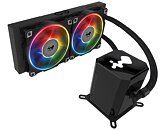
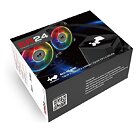
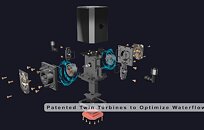
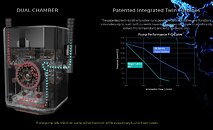
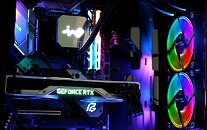
View at TechPowerUp Main Site
The innovative pump-block of the In Win SR24 is tubed to a 240 mm x 120 mm aluminium radiator. Ventilating it are a pair of included In Win Jupiter 120 mm fans that each spin at speeds of 500 to 2,500 RPM, with up to 101.5 CFM of air-flow, and as low as 23 dBA of noise output. The fans feature double ball bearings and feature addressable RGB LEDs in their hubs. A single 3-pin ARGB connection handles lighting for the two fans and the pump-block. The company didn't mention thermal load numbers, but among the CPU socket types supported are TR4, sTRX4, LGA2066, AM4, and LGA115x. The company didn't reveal pricing.





View at TechPowerUp Main Site





